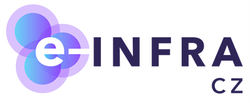Recently, in a press release, we informed about the first realized intercity quantum key distribution link in the Czech Republic, which was launched on 1 July 2021 within the OPENQKD project. The link operates in the optical infrastructure of the Czech research network CESNET and Polish PSNC between the cities of Ostrava (CZE) and Cieszyn (POL).
The Cerberis 3 IDQuantique QKD system installed on the Ostrava – Cieszyn line is accompanied by the Centauris 6140 encryptors. The encryptors have the capability to encrypt and decrypt traffic with speeds up to 40 Gbps. The entire system is configured such that QKD keys are transmitted between the QKD system and encryptors over a dedicated interface using ETSI GS QKD 014 standard based on REST API. The QKD keys are used to encrypt and decrypt the traffic in Centauris encryptors using the 256-bit keys according to AES specification. The encryptors exchange the encrypted traffic using the route that is independent of the QKD system. The units are interconnected using 10 Gbps interfaces making the system capable of full 10 Gbps line encryption. The encrypted traffic is routed using the CESNET and PSNC DWDM backbone transmission systems.
On each side of the QKD line, there are three distinct parts that form the QKD system:
- the optical equipment providing quantum and service channels,
- the QNC (Quantum Node Controller) unit allowing the line integration into the KMS (Key Management System),
- the aforementioned encryptors providing a transparent encryption service to the connected computing nodes.
The keys distributed using the QKD are completely random as the whole system is based on principles of a quantum random number generator (described in the paper in the Nature journal). In the case of the Ostrava – Cieszyn line the quantum key generation maintains a stable speed around 2 kbps. The keys that are generated using the quantum channel are buffered by the QKD nodes and used as needed by the encryptors that need 256 bits to establish every single encrypted session.
The established QKD link is primarily used for an experiment within the OPENQKD project, which is intended to explore and demonstrate the possibilities of quantum-secure communication in the field of distributed computing – in this case between the supercomputing centres of IT4Innovations in the Czech Republic and PSNC in Poland. The QKD line between Ostrava and Cieszyn is also important proof that a fully functioning line can be established in the highly heterogeneous infrastructures of CESNET and PSNC, which attracts the attention of the international community that is interested in the technical details of this established QKD link.
Besides this project, VSB – Technical University of Ostrava is the leading institution of the QUANTUM5 project supported by the NATO SPS program and is a member of the national NESPOQ consortium together with CESNET and Brno University of Technology.
 IT4Innovations and CESNET are together part of e-INFRA CZ, a unique e-infrastructure for research and development in the Czech Republic, which represents a transparent environment providing complex capacities and resources for the transmission, storage and processing of scientific data to all entities engaged in research and development, regardless of which industry they work within. As such, it constitutes a communication, information, storage and computing platform for research and development at the national and international levels and provides an extensive and comprehensive portfolio of ICT services, without which modern research and development cannot be realised. Another member of e-INFRA CZ is CERIT-SC.
IT4Innovations and CESNET are together part of e-INFRA CZ, a unique e-infrastructure for research and development in the Czech Republic, which represents a transparent environment providing complex capacities and resources for the transmission, storage and processing of scientific data to all entities engaged in research and development, regardless of which industry they work within. As such, it constitutes a communication, information, storage and computing platform for research and development at the national and international levels and provides an extensive and comprehensive portfolio of ICT services, without which modern research and development cannot be realised. Another member of e-INFRA CZ is CERIT-SC.
